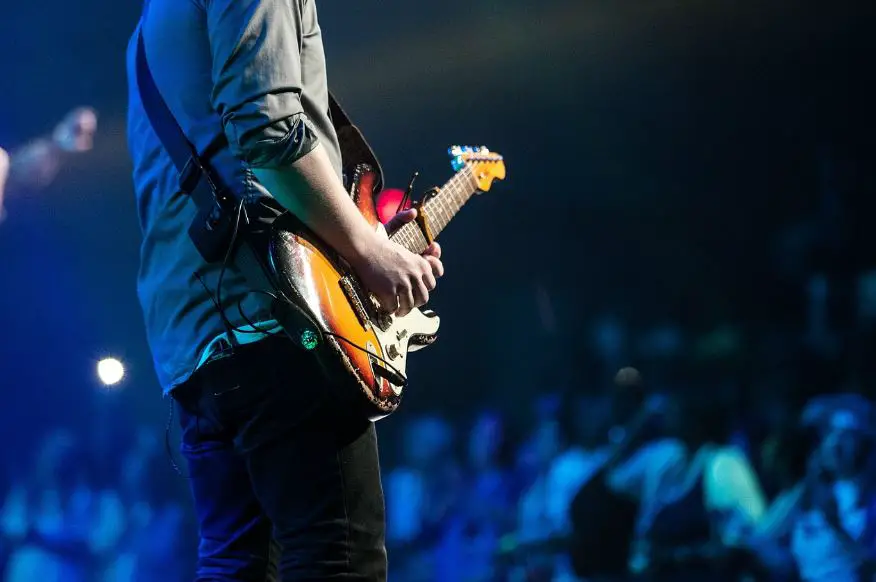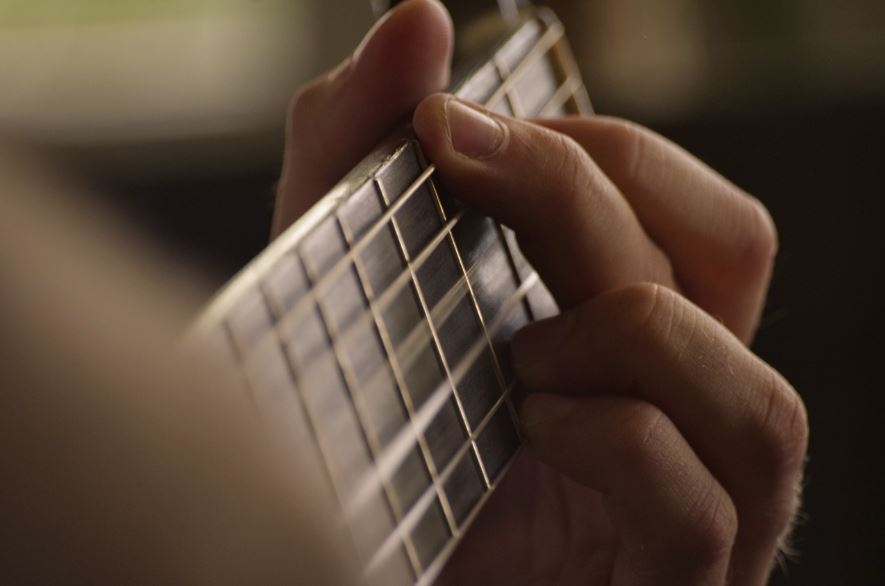This product list contains affiliate links. This means that at no extra cost to you, I may earn a commission if you use one of these links to make a purchase.
Last updated on November 4th, 2023 at 08:02 am
Improving guitar finger dexterity is a common goal among guitarists, as this skill is fundamental to enhanced playing ability. As a guitarist, you’re likely aware of the importance of finger dexterity, yet it can be a challenge for many to develop. Fear not – there are numerous strategies to improve your guitar finger dexterity, including specific finger exercises and techniques to incorporate into your practice routine.
I will provide you with 5 essential tips to further improve your guitar finger dexterity. These tips encompass finger exercises and techniques that you can begin applying today to refine your playing skills. Whether you’re a novice or a seasoned pro, these tips are designed to assist you.
Key Takeaways
- 🎸 Incorporate finger exercises such as the Spider Walk, Hanon exercises, and finger tapping into your routine to enhance finger strength, agility, and flexibility.
- 🔄 Regularly practice agility exercises like string skipping and alternate picking, as well as flexibility exercises including finger stretches and chord changes.
- 👋 Start with correct hand positioning and efficient finger placement for optimal strength, reach, and dexterity on the fretboard.
- ⏱️ Practice exercises at varying speeds with a metronome to develop your rhythm sense and accuracy while improving finger dexterity.
- 💪 Be consistent in your practice, overcome common challenges such as hand fatigue, and always engage in finger warm-up exercises before playing for optimal finger dexterity.
Finger Exercises for Guitar Players

Here are some finger exercises that have proven to be effective for guitar players:
Finger Workouts for Guitarists
- Spider Walk: This exercise involves walking your fingers up and down the strings and across the fretboard, mimicking the motion of a spider. Start by placing your 1st finger on the 1st fret of the 6th string, 2nd finger on the 2nd fret, 3rd finger on the 3rd fret, and 4th finger on the 4th fret. Then, move your fingers up one fret, placing your 1st finger on the 2nd fret of the 6th string, 2nd finger on the 3rd fret, and so on until you reach the 12th fret. Then, reverse the pattern and work your way back down.
- Hanon Exercises: These exercises are a series of finger drills designed to improve finger strength, agility, and speed. Start by practicing the first few exercises slowly, ensuring that each finger is pressing down on the fretboard with equal force.
- Finger Tapping: This exercise is great for improving finger independence and coordination. Start by tapping your 1st finger on the 12th fret of the 6th string, then your 2nd finger on the 13th fret, 3rd finger on the 14th fret, and 4th finger on the 15th fret. Then, reverse the pattern and work your way back down.
Finger Agility Exercises for Guitar
- String Skipping: This exercise involves skipping strings while playing various scales or arpeggios. This will help you improve your finger speed and agility as you navigate the fretboard.
- Alternate Picking: Alternate picking requires you to pick each note with alternating downstrokes and upstrokes. This exercise is great for improving finger coordination and dexterity.
Finger Flexibility Exercises for Guitar
- Finger Stretches: This exercise involves stretching your fingers by placing them on different frets and strings. Start by placing your 1st finger on the 1st fret, 2nd finger on the 2nd fret, 3rd finger on the 3rd fret, and 4th finger on the 4th fret. Then, move your fingers up one fret, placing your 1st finger on the 2nd fret, 2nd finger on the 3rd fret, and so on until you reach the 12th fret.
- Chord Changes: Practicing chord changes is a great way to improve finger flexibility and dexterity. Start by practicing simple chord progressions, such as G, C, and D, and gradually work your way up to more complex chords and progressions.
Remember to warm up your fingers before starting any of these exercises and to practice regularly to see noticeable improvement in your guitar finger dexterity.
Also Read: Finger Tape for Guitar: 5 Steps for Superior Play
Techniques to Enhance Finger Dexterity for Guitar

1. Correct Hand Positioning: Maintain a proper hand position with your thumb behind the neck and fingers perpendicular to the fretboard to ensure better reach and optimal finger strength, contributing to improved dexterity.
2. Efficient Finger Placement: Aim for accurate finger placement on the frets, not between them, to bolster finger strength and agility which in turn improve guitar finger dexterity.
3. Metronome Practice: Employ a metronome during practice to work on exercises or riffs at varying speeds, enhancing muscle memory, finger strength, and accuracy.
4. Overcoming Challenges: Combat hand fatigue and finger pain by taking frequent breaks, stretching, and warming up before practice sessions. This helps in overcoming common hurdles in developing finger dexterity.
5. Consistent Practice: Dedicate time daily to exercises and techniques aimed at honing finger strength, agility, and flexibility. Consistent practice is the cornerstone of achieving noticeable improvement in guitar finger dexterity.
Conclusion
Conclusion
Investing time and effort in the exercises and techniques shared above will significantly contribute to improving your guitar finger dexterity. Whether you are a beginner or an advanced player, refining finger dexterity is a continual journey towards mastering the guitar.


